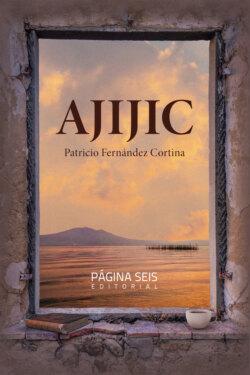Читать книгу Ajijic - Patricio Fernández Cortina - Страница 6
На сайте Литреса книга снята с продажи.
ОглавлениеChapter I
The Arrival
On the facade of the bookstore, La Renga, in the town of Ajijic, the owner had a verse engraved into a lovely wooden board that read as follows:
No one ever knows who will knock at your door.
Opening it, that April evening,
the wind entered like a blue gust
and the smell of orange blossoms inundated my entire home.
An afternoon in which the lagoon sparkled with the orange hues of the sun, Juan Sibilino declared that there was no danger whatsoever. It was then that Julio, the bookseller, went out to the cobblestone street to observe the spectacle in the sky. The storm had passed, and hundreds of swallows flew over the town. We were all at peace and Juan Sibilino said that the flight commemorated one more year of the arrival of the first foreigners to Ajijic. We all liked believing in that story. The people of the town, who had shuttered themselves within their homes against the storm, also came out to see the spectacle: the swallows descended like arrows from the top of the mountain called Tepalo, flying at great speeds over the rooftops, and once they reached the lagoon they disappeared into the horizon amidst the dark colors of García Hill. The bells of the church of St. Andrew The Apostle tolled and the evening prepared itself for the coming stillness of the night.
Rainwater ran down the cobblestone streets, forming streams that flowed towards the lagoon. It smelled of wet earth. A few of the elders of the town spoke among themselves sitting on equipales outside their homes, watching the running water, and ruminating philosophically on such a beautiful and peculiar manifestation of nature. They sang verses from that blessed land: “The sun comes up through Ocotlán, the moon comes up through Tizapán, and little by little, the tide rises in the lagoon.” In the poetry of the light, the lake is blue at dawn and bathes in amber at dusk. When the evening and night meet and fuse into the thin line of the horizon, the amber yields to an infinite darkness punctured by stars.
Ajijic is a town situated on the shores of Lake Chapala, about twenty-five miles from the city of Guadalajara. Magical and picturesque, it’s surrounded by mountains and enjoys some of the best weather in the world. Its portentous flora overwhelms the visitor’s gaze. The way into town is by way of Jin Xi Boulevard, flanked by majestic pines, it changes its name to Occidental Highway, where the splendor of jacarandas and flamboyant trees rises. Up ahead, after Columbus Street, the road changes name again to Western Highway, and further yet, at the outskirts of town, it turns into a highway that snakes along the lagoon.
No one knows exactly what year the first foreigners came to Ajijic, but the truth is that, as they arrived, the town was transformed through a cultural miscegenation that intertwined two very diverse civilizations: on the one hand, Canadians and Americans (mostly), and, on the other, the inhabitants of Ajijic and the towns dotted along the shores of Lake Chapala: like the souls of a dissimilar and picturesque painting, a beautiful work woven in a loom, like a verse from Neruda: “because it is the mystery of a town to be one and be all.”
The foreigners rented or bought homes, in accordance with each of their means, and painted them in a variety of colors. They hung flowerpots on the facades, covered the walls with vines, constructed fountains, drew figures of birds on the thresholds of the outer doors, planted trees in the gardens, and filled every inch with music; they opened cafes and restaurants, craft, and jewelry stores, they created real estate offices to promote their homes for sale and for rent. They participated in the construction of a golf course, started reading and dancing clubs, founded lakesider community organizations like The Lake Chapala Society, and with the slogan “When the expats are together” they worked tirelessly to beautify the town, contributing ideas on how to revive it. They founded and constructed the Lakeside Little Theater, a symbolic representation of striving for a better life in community through culture and the high spirit of those who work and enjoy the arts. They participated in the “Viva La Música” festival, helping public parks like La Cristianía of Chapala become clean and properly run places. They propagated order, which enriched the togetherness of daily life in town. They came to Ajijic to live in peace, and they became one with the land, with the water, with the weather, and with the people. They decided to stay forever.
But not everything was milk and honey: “hunky-dory”. Years ago, a man came to Ajijic from New York, to change the life of a woman and her son, forever. A man who, like a gust of wind, forever upended destiny.
